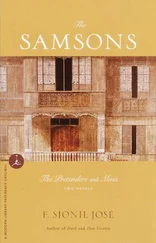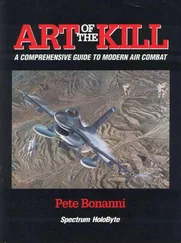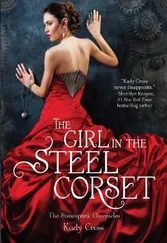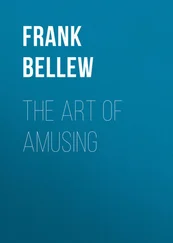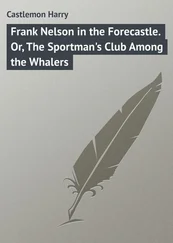Frank Abagnale - The Art of the Steal
Здесь есть возможность читать онлайн «Frank Abagnale - The Art of the Steal» весь текст электронной книги совершенно бесплатно (целиком полную версию без сокращений). В некоторых случаях можно слушать аудио, скачать через торрент в формате fb2 и присутствует краткое содержание. Год выпуска: 2001, ISBN: 2001, Издательство: Broadway Books, Жанр: Старинная литература, на английском языке. Описание произведения, (предисловие) а так же отзывы посетителей доступны на портале библиотеки ЛибКат.
- Название:The Art of the Steal
- Автор:
- Издательство:Broadway Books
- Жанр:
- Год:2001
- ISBN:9780767910910
- Рейтинг книги:4 / 5. Голосов: 1
-
Избранное:Добавить в избранное
- Отзывы:
-
Ваша оценка:
- 80
- 1
- 2
- 3
- 4
- 5
The Art of the Steal: краткое содержание, описание и аннотация
Предлагаем к чтению аннотацию, описание, краткое содержание или предисловие (зависит от того, что написал сам автор книги «The Art of the Steal»). Если вы не нашли необходимую информацию о книге — напишите в комментариях, мы постараемся отыскать её.
The Art of the Steal — читать онлайн бесплатно полную книгу (весь текст) целиком
Ниже представлен текст книги, разбитый по страницам. Система сохранения места последней прочитанной страницы, позволяет с удобством читать онлайн бесплатно книгу «The Art of the Steal», без необходимости каждый раз заново искать на чём Вы остановились. Поставьте закладку, и сможете в любой момент перейти на страницу, на которой закончили чтение.
Интервал:
Закладка:
Except on large checks, what’s remarkable is a forger doesn’t even need a signature anymore. On most checks, banks don’t bother looking at signatures, because everything is automated. Banks process 69 billion checks a year, and nobody really sees most of those checks. Banks practice “selective check inspection,” whereby they set a limit below which they will clear checks without examining their signatures. It’s rare nowadays for a major bank to look at any check for less than twenty-five thousand dollars. These checks whisk through a high-speed bank check sorter at a rate of two thousand items per minute, or forty checks a second. When the checks go down the sorter rails, they’re traveling at a speed in excess of four hundred miles an hour! The machines could do it quicker, but the checks would catch on fire.
Thus, if the check is under a designated amount, no human eye looks at the signature. If I scribble an “X” or write “Elvis Presley” on a one- thousand-dollar check, or don’t sign it at all, the check is still going to clear the bank as long as the funds are in the account. “Dateline,” during its report on check fraud, had no difficulty cashing small checks signed by “Porky Pig,” “Bugs Bunny,” “Attila the Hun,” and “Bill Clinton.”
On those checks, you can’t fault bank employees for missing suspicious signatures. But you can on higher amounts. At many institutions, there are rules for when someone from the site review area must verify signatures. At most community banks today, it’s $5,000. At most mid-sized banks, it’s $10,000. At the nation’s top fifty banks, it’s $15,000 to $25,000 before any human being in site review looks at that check. But here we run into another problem: there’s not much emphasis on training anymore. Years ago, for instance, every city used to have a chapter of the American Institute of Banking, which was the educational arm of the American Bankers Association. When banks started to merge and began to create multiple branches, however, bank managers said, “I don’t want to send my teller out to some training program that I’m not controlling, so I’ll train my own tellers.” A lot of banks teach the teller how to handle all the money in the window, but don’t tell them anything about how you recognize a counterfeit bill or how you recognize a fraudulent check. And smaller banks simply don’t have the resources to train their personnel. New hires get trained by whoever is standing at the next window. What that person doesn’t know, new tellers will never know.
DON’T GET YOUR WIRES CROSSED
When someone wants to forge a company’s check, one of the most promising ways that he gathers the pertinent information is by calling his victim and asking for it. When the company switchboard answers, he asks for the accounts receivable department. He tells them that he’s getting ready to wire the company some funds, and asks for the wiring instructions. He could call up any company in the world, and as soon as he says that he’s going to wire them some money, the company will tell him where it banks, on what street, in what city, what the account number is, and what the transit number is. What more could you ask for? What the forger is essentially asking is, how do I write drafts on your bank account? And you’re the one telling him. Ten years ago, you had to corner someone in the parking lot and bribe him to write down that information on a piece of paper. Now you can get it for free with a simple telephone call.
WHAT TO DO
Obviously, any company getting wires every day has to give out the information over the phone, in order to allow people to electronically transfer money to its accounts. But there’s a way to prevent this kind of fraud. All you have to do is open up what’s known as a non-negotiable incoming wire account to receive your wire transfers. So when people call up and ask for that information, that’s the account you give them. Funds that come into that account by wire can’t be withdrawn, can’t be taken out verbally, and can’t be taken out electronically. The only thing you can do is put money into the account. Those funds are held there until the end of the bank day, at which point they’re moved to the account that you write checks on.
THE BUCK STOPS WITH YOU—SO YOU’D
BETTER GET THE CHECK RIGHT
In the old days, the bank was entirely liable if it paid a forged check. At that point, companies would say, well, I don’t care about my checks. If somebody forges a check, I’ll catch it in my audit, take it down to the bank, and they’ll give me my money back. And if they don’t, I’ll find another bank to do business with.
Because of changes in the law, it doesn’t work that way anymore. If the bank can prove that you were negligent in any way, then they don’t owe you the money. Say you work in accounts payable and asked a clerk to cut you a check for $63,000 to pay an invoice. The clerk cut the check and then brought it to you. It was five o’clock, time to go home. You were going to mail it with some papers, but you say, oh, I’ll just do it tomorrow. So you put it all in your out box and go home. The janitor comes in, takes the check, cashes it, and it clears the bank. You ask the bank for your money back. Forget about it. You were negligent in leaving the check lying there, and your negligence led to that forgery.
Due to the shift in liability, businesses need to make their checks more secure. There are an array of security features to do just that. I do a lot of check designing, and I advocate the use of a technique called layering, in which a number of features are added to the same check. Why? Because different protection features respond differently to fraud methods. By combining several features, attempting to circumvent one security feature can enhance the protection provided by another.
WHAT TO DO
First of all, you need to use a check that’s difficult to forge or alter. Too many companies just use that familiar green or blue basketweave check paper, because it’s the cheapest. The companies run it off on the laser printer and they have no controls at all on the paper.

To guard against forgers who use chemicals to alter checks, you need to order chemically sensitive paper. You have to ask the printer, If someone touches it with bleach or ink eradicators, what’s going to happen? Good paper stock is sensitive to at least nineteen chemicals—chemicals like bleach, acetone, solvents, and hydrochlorides. Whenever these are used to alter a check, the word “void” appears in the background of the paper in three languages, English, Spanish, and French. The word should just appear right from behind the paper as soon as you touch it with any of those substances. At the very minimum, the check should change color. It should go from a blue check to a green spot or a brown spot on the check.
So if someone is issued a check and tries to chemically alter the amount, he’s out of luck. He can’t go back to you and say, “Look I tried to forge your check and this void showed up all over.”
I told you about how forgers use Scotch tape to remove information off laser-printed checks. To solve this problem, when you buy laser paper for your checks you need to ask the supplier if it has “toner anchorage.” Sometimes this is called “LaserLock” or “Toner Lock.” This is a chemical that is put in the paper during the paper-making process to ensure that documents printed on a laser printer are secure. When the toner is applied, the chemical that is already in the paper is activated by the heat process and when the chemical and the toner mix, the toner is locked to the paper. It’s impossible to scrape it off and tape won’t remove it.
Читать дальшеИнтервал:
Закладка:
Похожие книги на «The Art of the Steal»
Представляем Вашему вниманию похожие книги на «The Art of the Steal» списком для выбора. Мы отобрали схожую по названию и смыслу литературу в надежде предоставить читателям больше вариантов отыскать новые, интересные, ещё непрочитанные произведения.
Обсуждение, отзывы о книге «The Art of the Steal» и просто собственные мнения читателей. Оставьте ваши комментарии, напишите, что Вы думаете о произведении, его смысле или главных героях. Укажите что конкретно понравилось, а что нет, и почему Вы так считаете.

